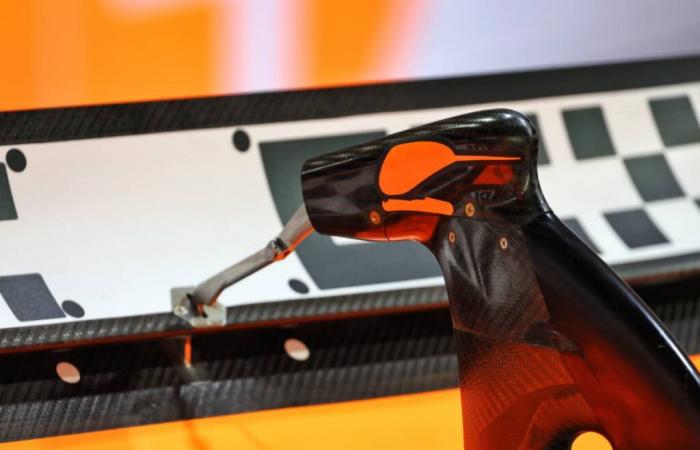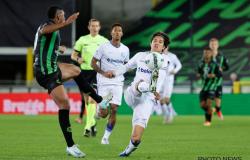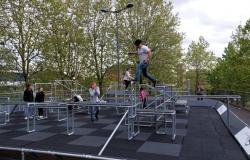A dupe for Lando Norris and Oscar Piastri, who will no longer be able to benefit from their “mini-DRS” in the upcoming Grands Prix.
The McLaren F1 team has been ordered by the FIA to make adjustments to its flexible rear wing, which is suspected of generating a “mini DRS” effect.
Although the wing in question is not deemed illegal by the sport’s governing body, the British team will have to reduce the excessive flexibility of the element to comply with the federation’s expectations.
Rear wing validated, but adjustments required
The FIA has asked McLaren to “control the amount of movement of the element” from the rear wing of his car, after having observed on-board images of Oscar Piastri’s vehicle during the recent Azerbaijan Grand Prix, which he also won.
Although the car successfully passed all the static tests imposed by the FIA, it appeared that the team was exploiting the limits of the regulations on bodywork flexibility.
The FIA’s main concern is the aerodynamic impact of the wing, which could give McLaren an unfair advantage over its rivals. However, the FIA has not directly accused the team of breaching the current technical regulations.
Zak Brown defends McLaren innovation
McLaren CEO Zak Brown has defended the rear wing design and praised the work of the team’s engineers. Speaking at the Singapore Grand Prix, he explained that the wing complied with the rules: “It passed all the tests. I think it’s Formula 1, it’s intelligent engineering. The FIA agrees with that. After that, it’s business as usual, often innovations have to be put away.”
These comments highlight the ingenuity of McLaren’s engineers, who appear to have exploited a grey area of the regulations. However, even in this context, the FIA felt it necessary to request changes to avoid any controversy or unfair advantage.
A revision of the technical regulations to come?
The FIA has indicated that it could review the technical regulations if it considers that other aerodynamic elements on single-seaters have similar characteristics.
Technical Directive No. 34 specifies that designs whose structural properties vary according to secondary parameters (such as temperature or aerodynamic load) will not be considered legal.
The FIA wants to avoid parts that pass static tests but change behavior under racing conditions.
McLaren responds proactively
McLaren quickly responded to the FIA’s requests, confirming that it would make the necessary adjustments. In a statement, the team said: “While our rear wing complies with the regulations and passes all FIA deflection tests, McLaren has proactively offered to make some minor adjustments to the wing following our conversations with the FIA.”
The team also suggested that other teams could be affected by this type of check: “We also expect the FIA to have similar conversations with other teams regarding the compliance of their rear wings.”
As McLaren struggles to maintain competitiveness while staying within the rules, this episode highlights the complexity of F1’s aerodynamic rules.
The ability of engineers to push the boundaries of innovation while meeting FIA requirements remains a key aspect of the sport, and it is likely that other teams will also have to adjust some of their parts in line with the Federation’s future decisions.






